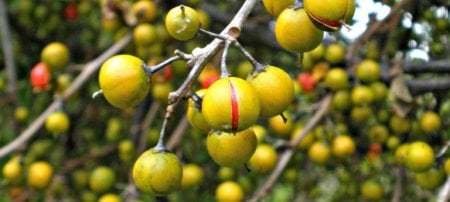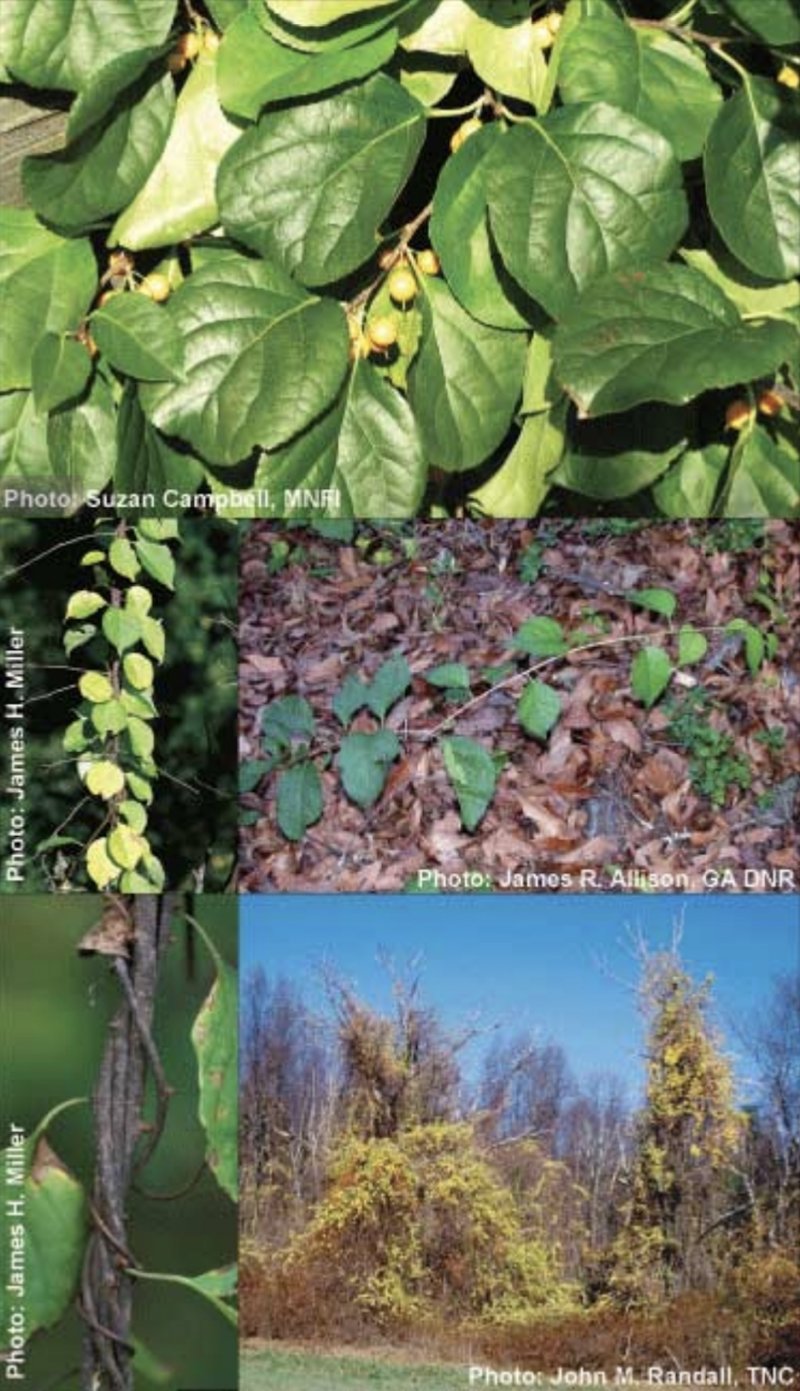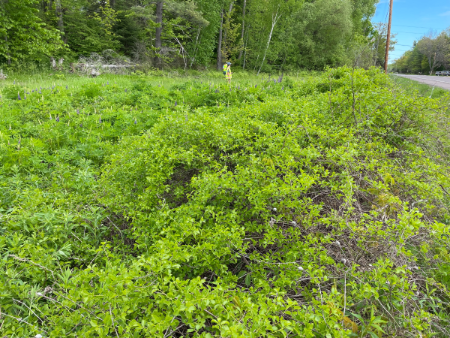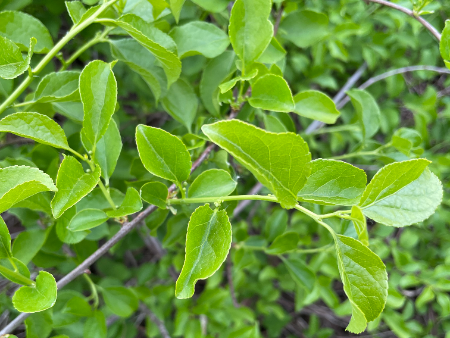Round leaf bittersweet fruits
Image credit: Ansel Oommen, Woody Invasives of the Great Lakes (WiGL) Collaborative

Round leaf bittersweet fruits
Image credit: Ansel Oommen, Woody Invasives of the Great Lakes (WiGL) Collaborative
Brought from Asia in the 1860s as an ornamental plant, round leaf bittersweet is a perennial in the Celastraceae family. It is an invasive woody vine that inhabits suitable areas where it can find a host, commonly in undisturbed forests where it clings to other woody plants and on roadsides where it climbs fences.
Note: While round leaf bittersweet may look similar to its native counterpart, American bittersweet (Celastrus scandens), some key differences for identification are found in the leaves and fruits of the two species. In round leaf bittersweet, the leaves and fruits grow along the stem of the vine on the leaf axil. Whereas the American bittersweet leaves and fruit only grows in terminal clusters on the ends of the stem. There is notably a chance of hybridization between the two species, which can make identification more difficult.

Round leaf bittersweet identifying features
Image Credit: Midwest Invasive Species Information Network (MISIN)
For more information, visit the MISIN website.
One large patch of round leaf bittersweet that has been managed by KISMA was treated with a combination of manual and chemical management practices. First, the KISMA crew dug up the patch, removing as much of the root mass as possible. Removed plant material was then burned. Lastly, all resprouts were chemically spot-treated by the Forest Service.
Note: Round leaf bittersweet's ability to hybridize with American bittersweet and impact host species by reducing photosynthesis and girdling trees makes it a KISMA species of concern. Report any instances of round leaf bittersweet found in natural habitats to KISMA. Currently, we are focusing on building a better understanding of where this invasive vine occurs throughout the Keweenaw.
Both woodbine (Parthenocissus inserta) and Virginia creeper (Parthenocissus quinquefolia) make excellent alternatives for round leaf bittersweet as they are native to the Great Lakes region. Importantly, American bittersweet should be avoided as a native alternative as nurseries can easily confuse it with round leaf bittersweet.

Large area with round leaf bittersweet prior to management by KISMA and the Forest Service
Image credit: Sigrid Resh

Round leaf bittersweet
Image credit: Sigrid Resh